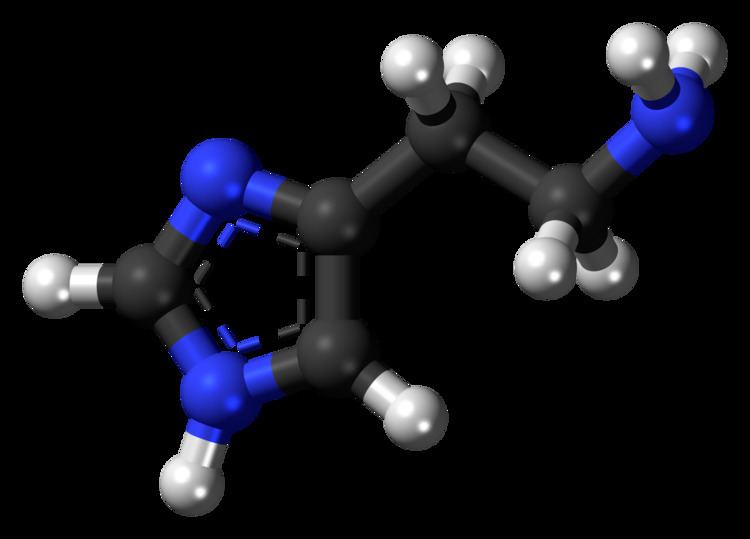Specialty emergency medicine ICD-9-CM 988.0 eMedicine emerg/523 | ICD-10 T61.1 DiseasesDB 31114 | |
 | ||
Scombroid food poisoning is a foodborne illness that results from eating spoiled (decayed) fish. Along with ciguatera, it is listed as a common type of seafood poisoning. The toxin believed to be responsible is histamine, formed as the flesh of the fish begins to decay. As histamine is also the natural agent involved in allergic reactions, scombroid food poisoning often gets misidentified as a food allergy.
Contents
The syndrome is named after Scombridae family of fish, which includes mackerels, tunas and bonitos, because early descriptions of the illness noted an association with those species; however, the Centers for Disease Control and Prevention (CDC) have identified other, nonscombroid vectors, such as mahi-mahi and amberjack. Scombroid syndrome can result from inappropriate handling of fish during storage or processing. Cooking the food does not prevent illness, because histamine is not destroyed at normal cooking temperatures.
Causes
Unlike many types of food poisoning, scombroid form is not brought about by ingestion of a pathogen. Histidine is an amino acid that exists naturally in many types of food (including fish) and at temperatures above 16 °C/60 °F it is converted to the biogenic amine histamine via the enzyme histidine decarboxylase produced by symbiotic bacteria such as Morganella morganii (this is one reason why fish should be stored in the freezer). Histamine is not destroyed by normal cooking temperatures, so even properly cooked fish can still result in poisoning. Histamine is the main natural chemical responsible for true allergic reactions, so the symptoms produced are almost identical to a food allergy.
Symptoms
Symptoms typically occur within 10–30 minutes of ingesting the fish and generally are self-limited. People with asthma are more vulnerable to respiratory problems such as wheezing or bronchospasms. However, symptoms may show over two hours after consumption of a spoiled dish. They usually last for about 10 to 14 hours, and rarely exceed one to two days.
Initial
The first signs of poisoning suggest an allergic reaction with the following symptoms:
Additional symptoms
The above symptoms can advance to:
Severe
In the worst cases, the poisoning may cause:
In rare cases, the poisoning may result in death. The coroner's report on Noelene and Yvana Bischoff, mother and daughter tourists from Australia who died suddenly in Bali in January 2014, concluded their deaths were caused by scombroid food poisoning.
Treatment
Treatment is in the form of supportive care. If there is light-headedness, the victim should lie with feet partly elevated. If there is severe wheezing, then intramuscular epinephrine should be given, 0.5–1 ml at dilution of 1/1000 (standard medical emergency kit). An oral or intravenous antihistamine should be given if needed.
Epidemiology
Isolated reports of scombroid food poisoning in humans caused by histamine present in the tissues of stale or rotten scombroid fish, usually tuna, have occurred over the years. In September 2016, the Singapore authorities intercepted canned tuna imported from Thailand after finding high levels of histamine. No human cases were reported. In 2015, 7 people at a cafe in Sydney became ill after eating John Bull Tuna Chunky Style in safflower oil on tuna salads. The tinned tuna had come from Thailand. The Shenzhen Post reported that histamine poisoning from scombroid fish happens often in the autumn in Guangdong province in China. In August 2013, 26 people in Shenzen were poisoned after eating stale mackerel. Several people became ill after eating tuna sandwiches at a cafe in Edinburgh in Scotland in 2013. The tuna had come from Ghana. In 2011, 20 reports of food poisoning at a Stockholm restaurant were thought to be histamine poisoning in tuna from Senegal. In 2012, UK environmental health authorities in North East Lincolnshire intercepted and destroyed a shipment of tuna from Vietnam after 4 crew members were reported to have developed symptoms of histamine poisoning. Commercially canned tuna was determined to be the cause of the poisoning of 232 persons in the north-central United States in 1973.
